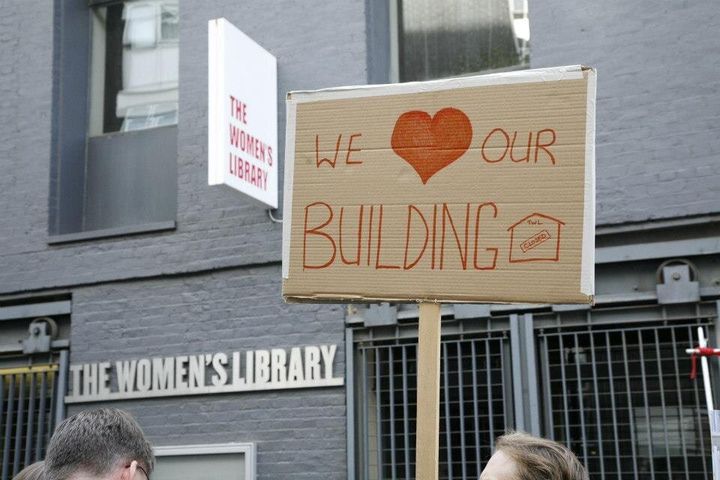In 1972, Norman Reid, then director of the Tate Gallery, purchased this sculpture by Carl Andre. The sculpture consisted of 120 cream-coloured, American firebricks arranged on the floor in two layers of 60 to form an oblong. The bricks were not cemented together in any way and, like a fractal, the parts and the whole were self-similar.
There was a public furore. How could the Tate pay for a 'pile of bricks' and claim it as art? The Tate and many art critics were at pains to explain to the public the aesthetic, mathematical and other significances of the work.
When earlier this week, a young woman berated the Save The Women's Library Campaign for being obsessed with "a pile of bricks", I was reminded of Carl Andre.

The "pile of bricks" that SaveTWL are obsessed with, is in fact a wonderful award-winning building. The Women's Library in Whitechapel was designed by a woman architect, Clare Wright, still quite unusual even in these times. The library incorporates elements of the original historic wash-house building and creates a magnificent new home for the library's unique collections in a vibrant part of the East End, rich in historical resonances; many suffragette actions took place in this neighbourhood.
Over the short time the library has been open, it has of course been invaluable to academics, but it has also become a much prized venue for women's groups, local schools and community organisations. This is not just a dry research facility, but is a great place to meet, to look at the exhibitions and at one time, to enjoy coffee and cake in the café. Users of all backgrounds report rich and varied memories of using the library.
This building was purposely designed around the materials of the collections, and is a special container for the objects within it. When the building opened in 2002, the Architectural Review commented that "the interiors have the feel of an exquisitely crafted casket."
The Library is now an entity. If LSE are allowed, as planned, to remove the objects and take them away to its own Library in Holborn they will be ripping the heart out of this wonderful 'pile of bricks'.
The Save The Women's Library campaign is fighting hard to prevent this. The campaign feels that London Metropolitan should never have been allowed to offer up the library contents separately from the library building. The SaveTWL campaign contends that perhaps London Metropolitan had no business tendering the library at all.
The site for the building was donated by Tower Hamlets Council, the construction was paid for out of public money granted by the Heritage Lottery Fund and all the collections were donated by Fawcett and other women's organisations and academics.
Can London Metropolitan University reasonably claim that they own the Women's Library? Perhaps this is why the bidding process was so rushed and so secretive. We know that all the other bidders withdrew for various reasons, including a 'moving of goalposts' leaving only one 'bidder'; the London School of Economics.
MPs, members of the House of Lords, London Assembly members, local councillors, representatives of women's organisations, local schools and many others have all written to the LSE begging them to re-consider. So far, they will not even agree to meet with any of us.
We urge readers to contact the LSE Director c.calhoun@lse.ac.uk or join us in our campaign to save the Women's Library by adding a photograph of yourself to our Tumblr.
